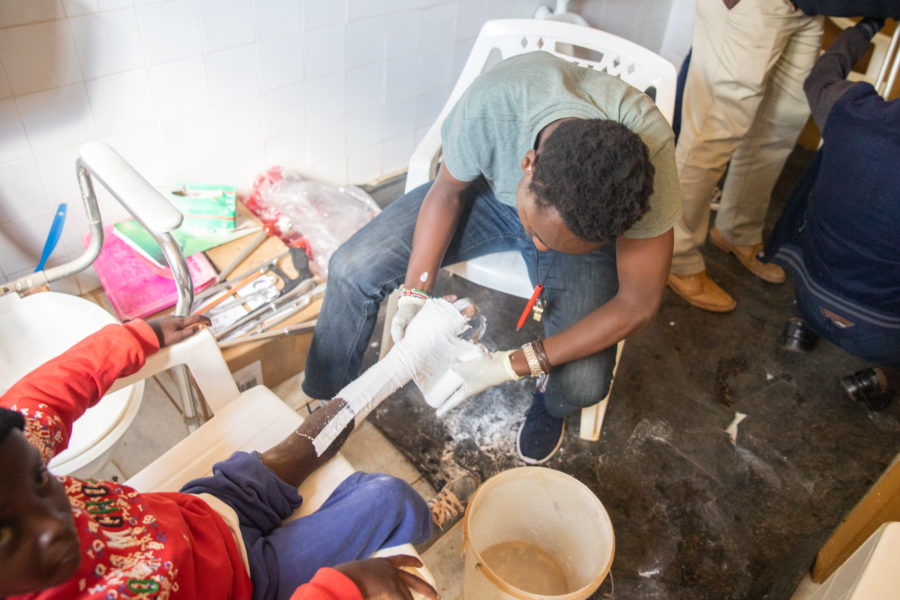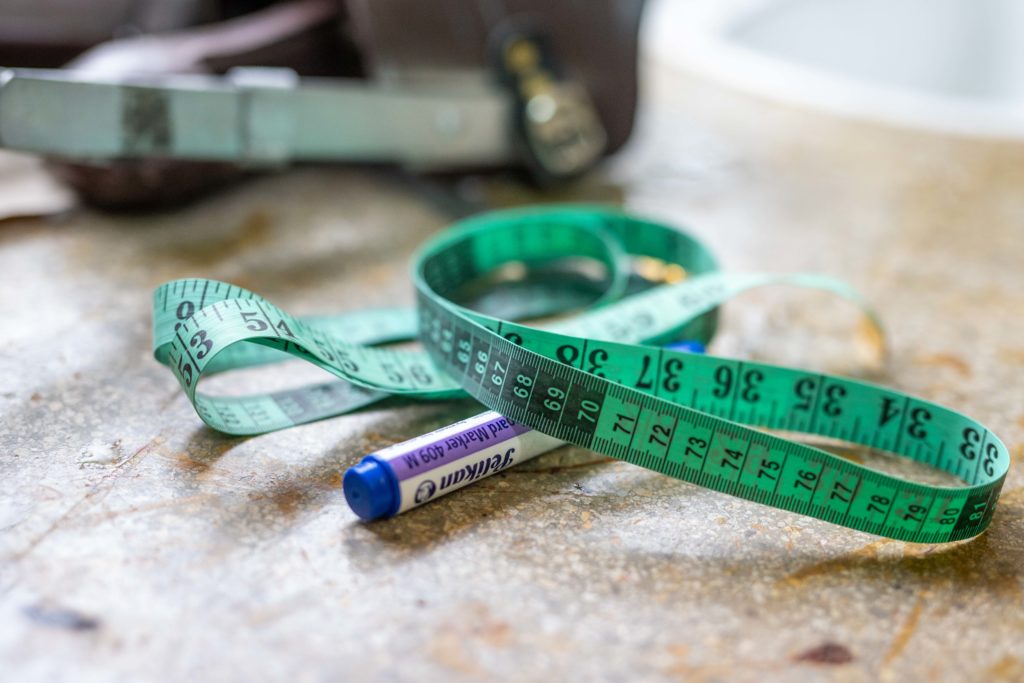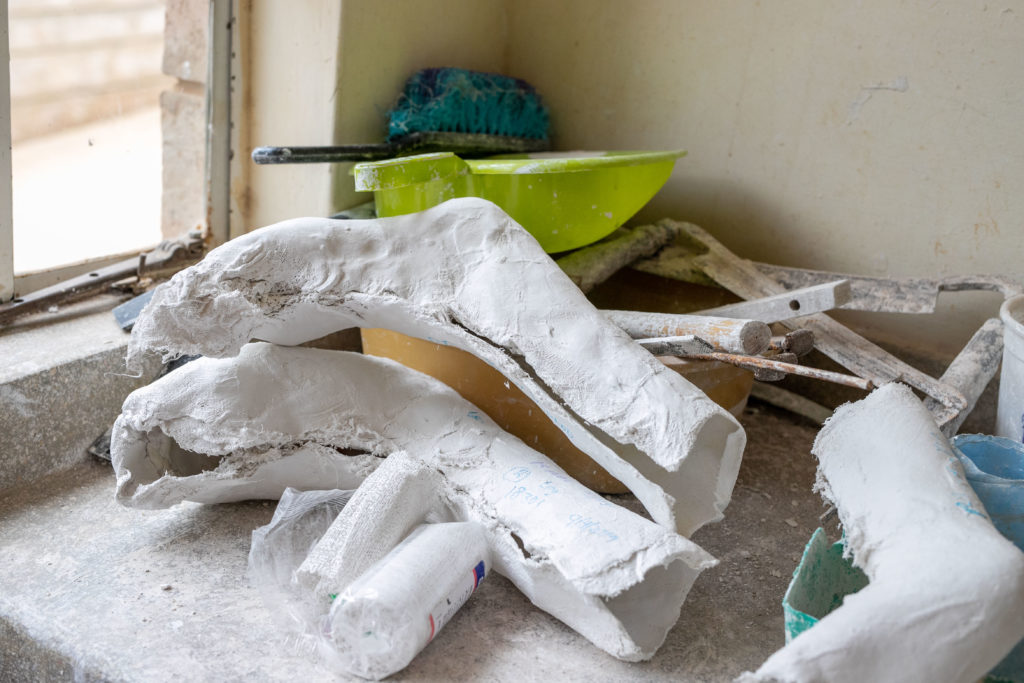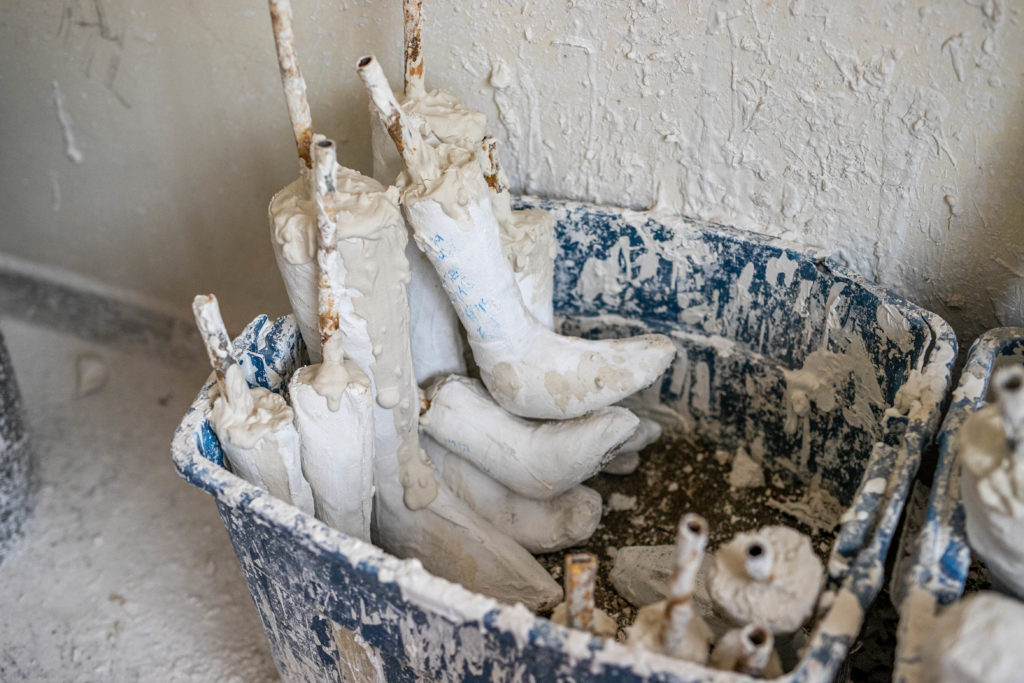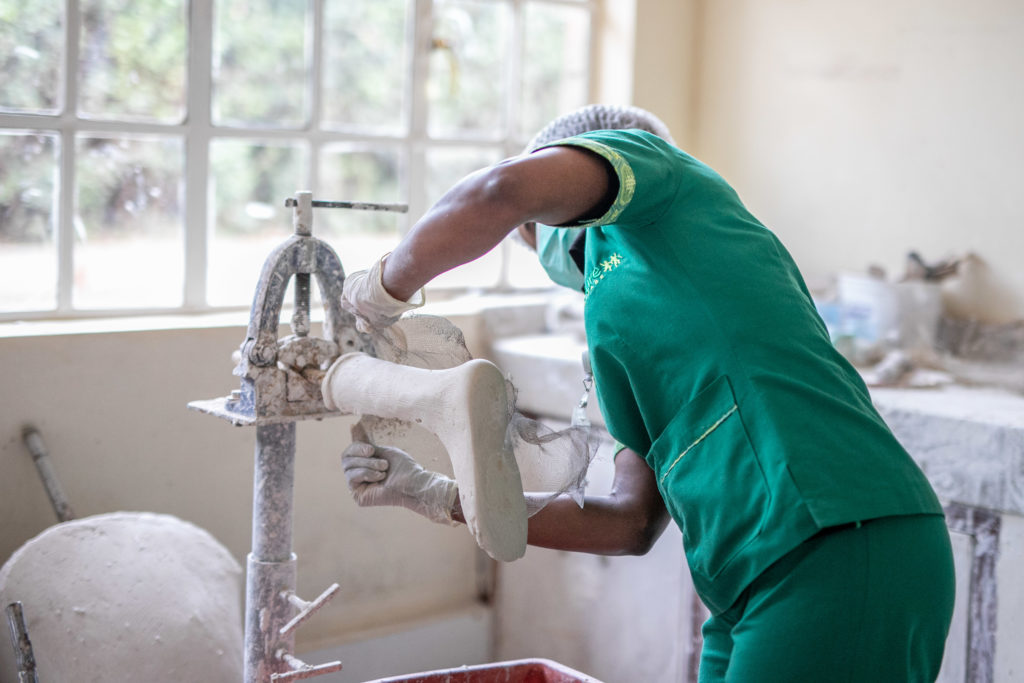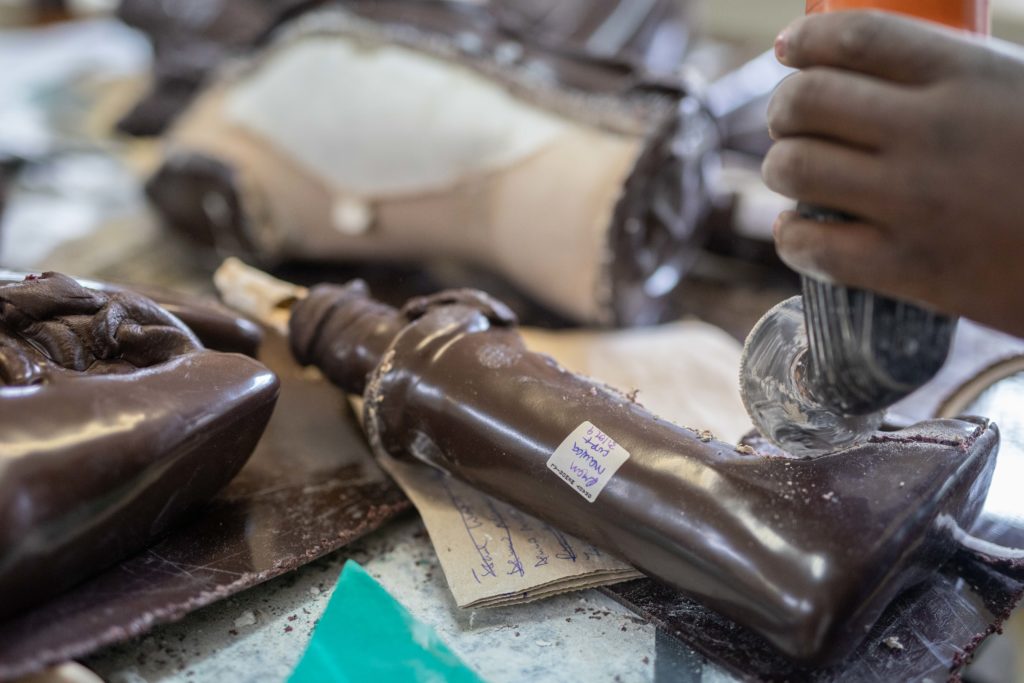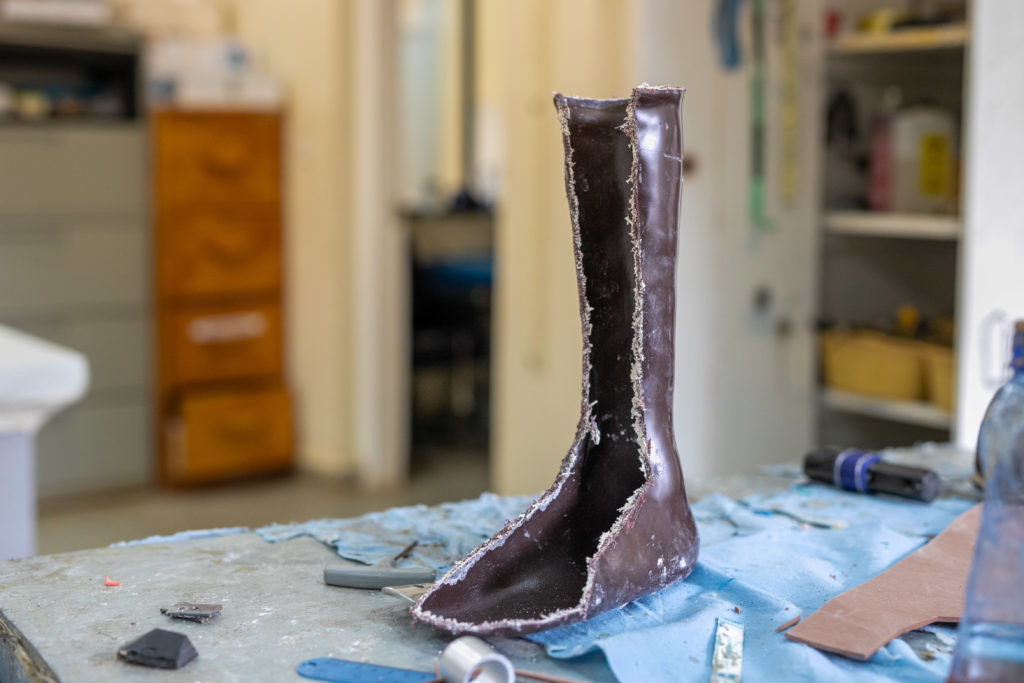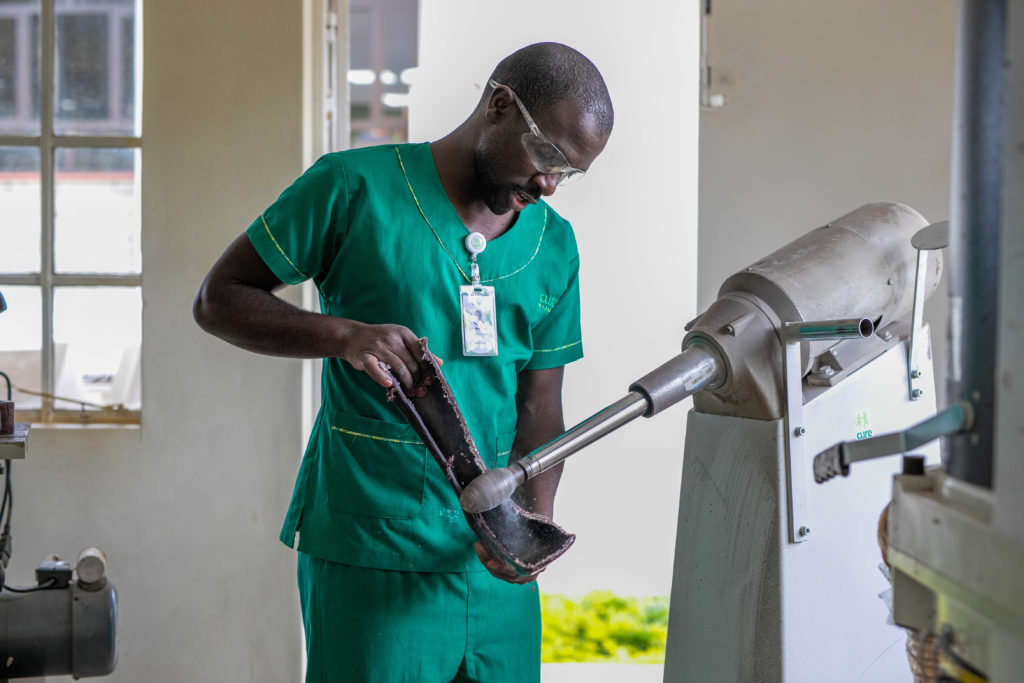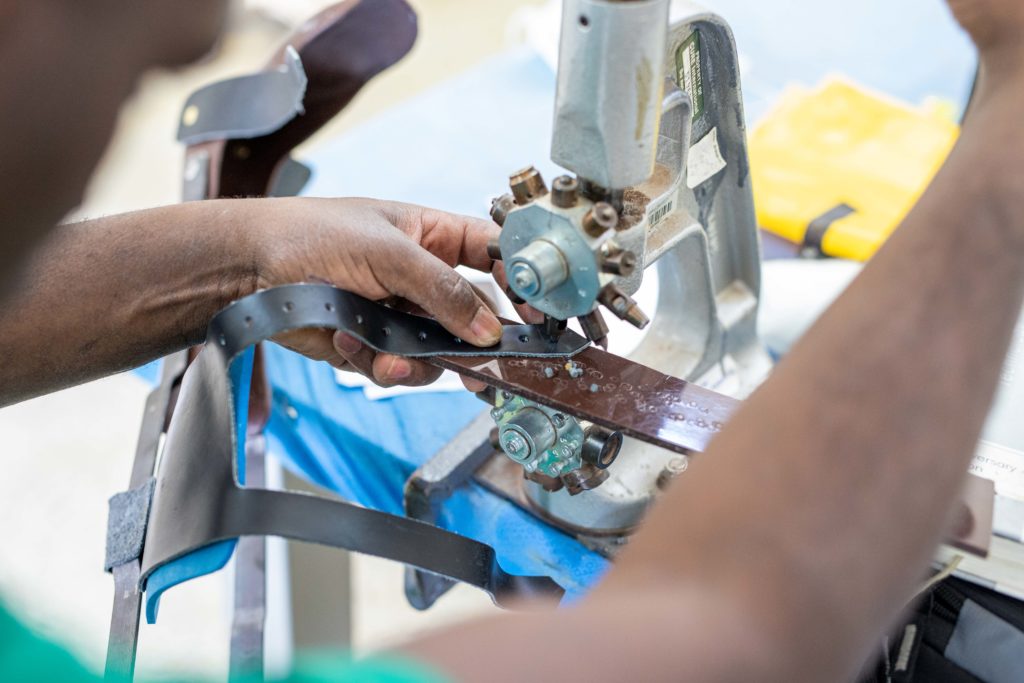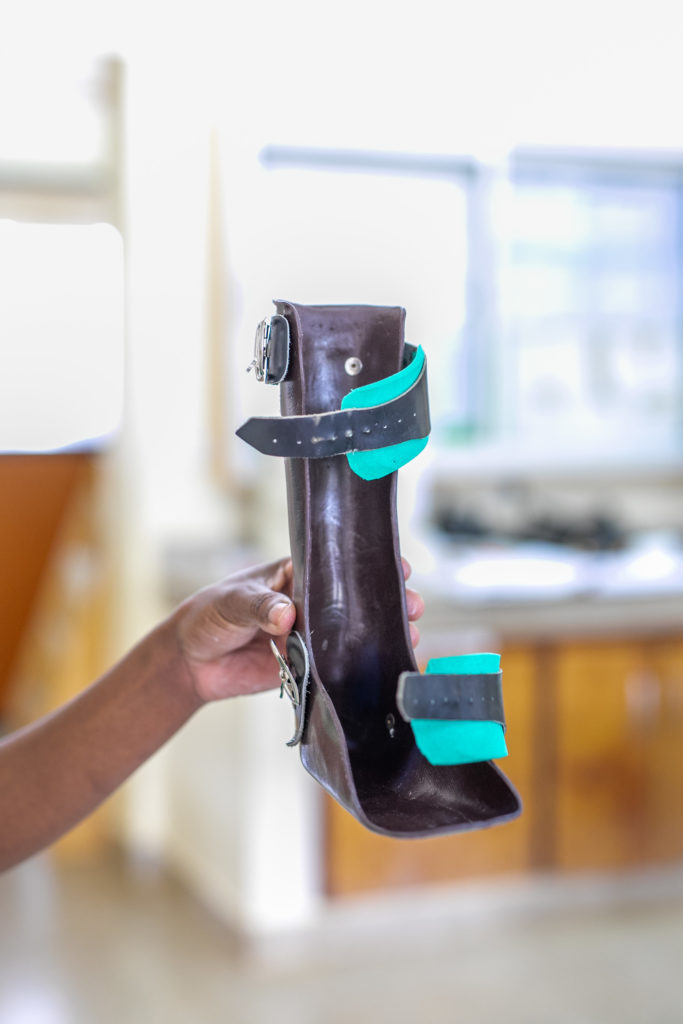The Art of Brace Making
Clubfoot is often corrected without surgery using the Ponsetti Method, a technique that uses manipulation and casting. However, after the child is five years old, it becomes very hard to use the Ponsetti Method to obtain the necessary correction, and children often need surgery. After surgery, a child is required to wear a cast for at least six weeks. If the wound is healing well after cast removal, the child is fitted for an Ankle Foot Orthotic (AFO). This helps to keep the leg in the right position as part of the correction process. In this article, we’ll take you through the process of making AFOs used in the clubfoot correction process.
An AFO is a brace used to control the position and motion of the ankle, compensate for weakness, or correct conditions. At CURE, we treat various disabilities that require our patients to wear orthotics during the correction process. The most common condition where an AFO is used is clubfoot. Even if a child is treated for clubfoot with the Ponsetti Method before five years old, the condition can return. In these cases, corrective surgery is needed.
Once the surgery is complete and the child has healed, the orthopaedic team is responsible for taking measurements for the new AFO. This process takes about 10-15 minutes. After the measurements have been taken, a new cast is applied to hold the leg in place to avoid complicating the correction.
The process of making an AFO begins with patient assessment. At CURE Kenya, assessments are done at a mobile clinic or in our orthopaedic workshop. After the assessment, based on the doctor’s notes, measurements are then taken with a tape measure. Once this is complete, the patient is sent home.
Plaster is used to make a negative cast of the patient’s foot that will serve as a mould. If the measurements are taken at a clinic, the negative cast must be brought back to the hospital for the rest of the process. At the hospital, a positive cast is made by pouring plaster powder into the negative cast. When this dries, it is removed and forms a reproduction of the patient’s foot.
The next step is the thermosetting and thermoforming room, where the plastic material that makes the AFOs is melted in an oven. The molten plastic is poured on the positive cast, which is mounted on a sanction so that all the features of the positive cast are formed by the molten plastic as it cools.
Once the plastic has cooled, the cast is placed on a workbench and carefully cut out of the positive cast. The product is a rough shell that is taken to the machine room and shaped by smoothing the AFO. Once straps are fixed on the AFO, it is ready for fitting and the patient is called.
It takes 2-3 weeks for an AFO to be made, and our orthopaedic technicians work diligently to get the job done. The orthopaedic team creates these very important braces to enable our patients to complete the correction process with success and do so to the glory and honour of God. It’s a tiring process, but our team finds much joy in creating braces that help to make our patient’s lives easier.
